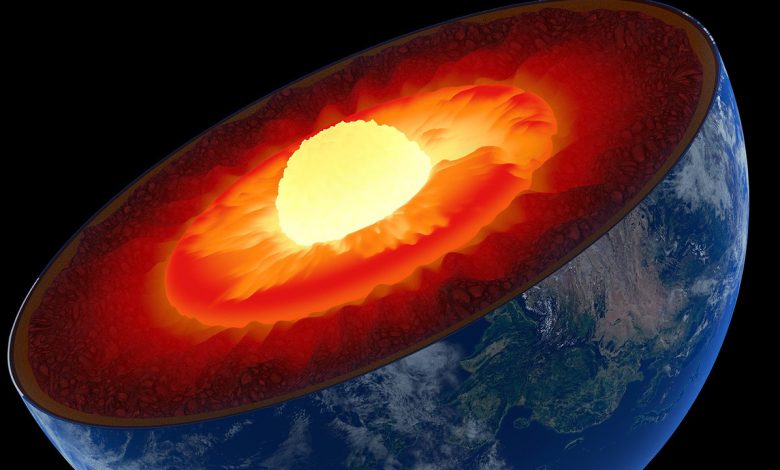
Earth’s innermost inner core: Key Highlights
-
- For a very long time, scientists have been studying the Earth’s innermost inner core in order to comprehend the origin and evolution of planets.
- Up until very recently, it was thought that the Earth’s structure was made up of the crust, mantle, outer core, and inner core.
- Fifth level:
-
-
- The existence of a fifth layer is supported by brand-new research that was recently published in Nature Communications.
- Based on the behavior of seismic waves from large earthquakes, extensive research into Earth’s deep interior revealed, according to the researchers, a distinct structure within our planet’s inner core: a wickedly hot, solid ball of iron and nickel about 800 miles (1,350 km) wide.
-
- Internal structure of Earth
-
-
- Earth’s diameter is about 12,750 kilometers, or 7,900 miles. There are four layers in the internal structure of the planet:
- A rock-filled crust on the outside,
- a rock-filled mantle,
- a solid inner core, and
- a magma-filled outer core.
- This metallic inward center, around 1,500 miles (2,440) wide, was found during the 1930s, additionally founded on seismic waves going through Earth.
- Earth’s diameter is about 12,750 kilometers, or 7,900 miles. There are four layers in the internal structure of the planet:
-
- Earth’s innermost inner core (IC) significance:
-
- A time capsule of our planet’s history, Earth’s innermost inner core (IC) makes up less than one percent of the planet’s volume.
- The convection of the liquid outer core, which in turn maintains the geodynamo, is driven by the latent heat and light elements released during the solidification process as the IC expands.
The layers of Earth’s interior
Crust
- It is the most solid part of the planet.
- Its nature is brittle.
- Under the oceanic and continental regions, the crust’s thickness varies.
- The continental crust is thicker than the oceanic crust.
- In the vicinity of major mountain systems, the continental crust is thicker.
The Mantle
-
- The Mantle is the interior portion above the crust.
- The asthenosphere
-
-
- The asthenosphere refers to the upper mantle.
- Astheno is Greek for “weak.”
- During volcanic eruptions, it is the main source of magma that reaches the surface.
- Beyond the asthenosphere, the lower mantle extends.
-
- The lithosphere
-
- The lithosphere refers to both the crust and the uppermost portion of the mantle.
- It is solid at this point.
The core
- Understanding the earth’s core’s existence was made easier by earthquake wave velocities.
- The inner core is a solid, whereas the outer core is a liquid.
- The majority of the core’s material is composed of extremely heavy nickel and iron.






.png)



